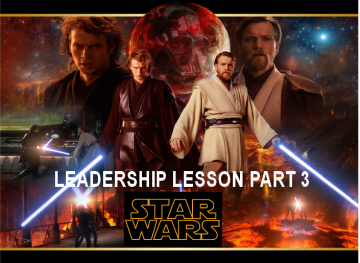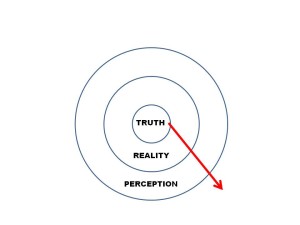
STAR WARS Leadership – Part 3
LEADERSHIP LESSONS FROM THE FORCE
Part 3 of 6
In the previous blog, we mentioned that inherently, you cannot rely on only yourself. One strong reason for this is that you will always see things from your personal perspective. This perspective causes you to form your reality. Many times, one allows this reality to be their truth when, in fact, it is usually far from it.
The Golden Circle principle shared by Simon Sinek states that the proper way to go about things is In going Out versus the often-accepted Out going In.
Because we are often (mis)led by doing things Out going In, many leaders are of the impression that they can succeed on their own. Not true. The way to do it is to accept the truth that we cannot do things all on our own. This creates the necessary reality that we need others and that affects the perception of how we accept/reject help from others.
To create an environment conducive to leadership growth, one part of the equation is that the leader should be open to receiving help from others (the other part is others willing to give of their help).
This is the Master-Padawan concept in Star Wars. You will notice that for both Jedis and the Dark Side, this relationship is crucial. Rushing, taking for granted, and/or neglecting this critical relationship has disastrous consequences. Simply look at how Anakin Skywalker became Darth Vader and you will see how disastrous things can become.
In the real world, we call this Mentoring. This is one of the most neglected and overlooked concepts and, because of such, the next levels of leadership usually come out wanting or half-baked. It is very surprising that many, many leaders in different organizations throughout different industries do not even understand the basics of Mentorship. While this blog cannot exhaustively cover all aspects, let me just share with you a critically, overlooked step.
True mentorship requires a Mentor and a Mentee. This mentorship is a formal relationship in that both parties need to present and accept each other as follows:
Step 1: Mentee presents himself/herself to a Mentor and formally declares to the person that he/she wants and is willing to be mentored. This is called SUBMISSION and this creates accountability towards your Mentor.
Step 2: Mentor has to formally accept and become responsible for the Mentee. This is called ACCEPTANCE and causes your Mentor to be responsible for you.
Step 3: Mentor and Mentee need to mutually agree on a regular method of engagement (e.g. weekly meeting) to maximize the process. This is called PROCESS and allows consistency and continuity in the relationship.
By beginning the relationship with the above steps, only then is the process birthed and reared. Many times, mentorship is a loosely held concept in that the mentor doesn’t even know he/she is mentoring someone. And even if there is some sort of formality in doing Steps 1 & 2 above, a critical error is that both fail to agree on Step 3 which is the process that rears and grows the relationship’s success.
If you are willing to be mentored, formalize the relationship. If you believe that the Mentorship Process is one that will be of immense value to you, then don’t treat it lightly. While you do not need to be as cinematic as calling your mentor as Master and he/she referring to you as My young Padawan, you should nevertheless grant the relationship the honor and respect it deserves.
More on this is in the next blog.

Leave a Comment